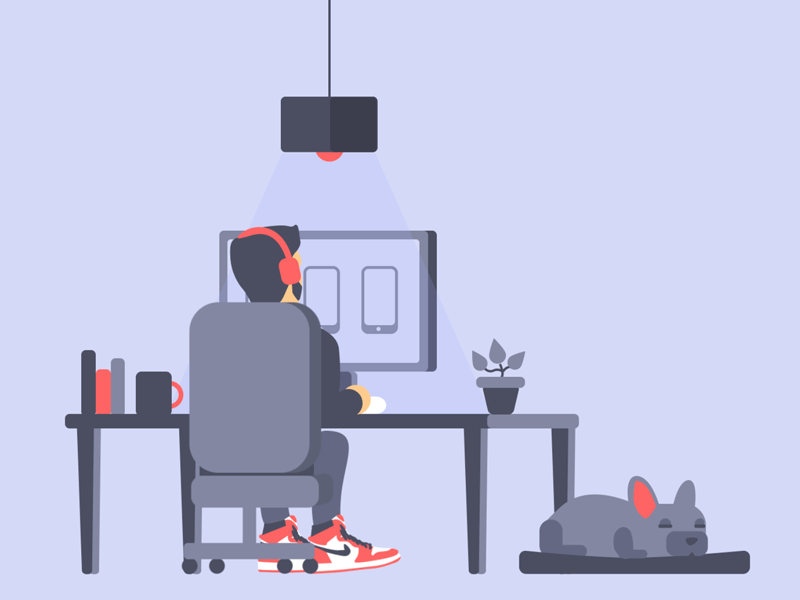
RallyReady
How I helped the local tennis community in eliminating player frustrations caused by long wait times and the need for reservations.
Project Context
Recreational tennis players in Toronto face frustrations due to long wait times, players exceeding their court time, and difficulty tracking time in crowded public courts, disrupting their experience.
RallyReady helps users by providing a streamlined solution for efficiently managing their court time, reducing wait times, and ensuring a smoother and more organized playing experience.
As someone who personally faces these issues, RallyReady was a passion project of mine. I interviewed the local tennis community players, analyzed competitors to find market gaps, adopted the design thinking process and created innovative features to solve their problems.
MY ROLE
UX Designer
DURATION
April ‘24 - May ‘24
TOOLS
Figma, Zoom, Notes App
TYPE
Passion Project

The Problem
Recreational Tennis players in Toronto experience frustration due to long wait times, players exceeding their allocated court time, and difficulty tracking time in crowded waiting areas at Public Tennis Courts.
The Solution
1. Court Occupancy Status and Wait Time Display
Providing real-time updates on court availability and estimated wait times, the app helps players make informed decisions on where and when to play.
2. Automated Time Tracking and Alerts
The app tracks time automatically, starting a timer when players check in, notifying them as their session nears the end, and allowing them to rejoin the queue to avoid exceeding their allocated time.
3. Virtual Queue Management and Wait Time Estimation
Offering a virtual queuing system, the app lets players join a queue remotely, check their position, get wait time updates and notifications, and suggests nearby courts with shorter waits.

The Process
To effectively address the challenges faced by Toronto’s recreational tennis players, I utilized the design thinking approach over a period of 6 weeks.
Empathize
Conducted primary user research to understand the needs and challenges faced by local tennis players.
Define
Clearly articulated the problems and needs of local tennis players through primary research.
Ideate
Generated creative solutions by uncovering market gaps, and brainstorming ideas.
Prototype
Developed solutions through iterative prototyping with hi-fi wireframes and interactive screens.
Test
Refined prototypes based on usability testing to ensure they effectively addressed the issues faced by the players.
This approach guided the development of RallyReady, resulting in a user-centered solution.

DISCOVER
DISCOVER
Goals for Research
Comprehensive Understanding
I will engage with tennis players one-on-one, observe wait times, and discuss their experiences to grasp their frustrations.
Identifying Trends and Patterns
Over a week, I will observe behaviors and identify patterns in how players wait and experience frustrations, validating with quantitative data.
Comparison and Prediction
I will understand player perceptions, compare behaviors, conduct online surveys and predict future needs to build RallyReady effectively.
Primary Research
For my primary research, I started off with conducting one-on-one interviews with 5 participants, administered online surveys, and observed tennis player behaviors and patterns over a span of two days.
Speaking to the Right People (Recreational Tennis Players)
RECRUITING
Conducted online surveys and polls to gather data on the frequency of court usage, peak times, and common frustrations within my own network of tennis players.
SURVEYS
Conducted one-on-one interviews with a diverse group of tennis players, ranging from casual players to serious enthusiasts, to gain in-depth insights into their experiences and pain points.
INTERVIEWS
Spent time at public tennis courts in Toronto to observe player behavior, court usage patterns, and the overall environment.
FIELD OBSERVATIONS
Key Findings
Long wait times frustrate users.
Players frequently exceed their 30-minute slots, preventing timely court turnover.
Tracking time in crowded waiting areas is challenging and leads to confusion and frustration.
After conducting comprehensive research, the three primary findings were as follows.
The user research revealed the problems faced by tennis players, enabling me to create themes in affinity mapping and define a user persona, which laid the foundation for transforming these insights into a structured problem definition.

DEFINE
DEFINE
In the Define phase, the goals are to organize player behavior insights into key themes, consolidate personas into one profile, and map experiences to identify challenges.
From my research, I synthesized 48 insights into 20 sticky notes, which I categorized into 4 sections with recurring themes with the help of an affinity map.
ESTABLISHING THEMES
I consolidated all user insights into one persona, ensuring I stayed focused on solving a specific problem within the scope.
KNOWING JOHN
- Let's take a look at John’s as-is scenario and see how we can help him -
EMOTIONAL JOURNEY OF JOHN
In conclusion, this phase allowed me to refine the data from observing player patterns and behaviors into actionable insights, ultimately consolidating their needs and pain points into a single "How might we" statement.

How might we
streamline court turnover, simplify time tracking in crowded areas, and provide real-time updates to reduce wait times and frustration for John's tennis sessions?

DESIGN
DESIGN
After defining the problem, I analyzed competitors to find key features and market gaps, then brainstormed innovative ideas for RallyReady.
Comparing Key Tasks
In my competitor analysis, I compared four key tasks across RallyReady's competitors: onboarding experience, finding courts using map functions, booking courts, and user engagement features.
(Left to Right) Play Your Court, Court Reserve, Tennis Pal, Playtomic, Park Mobile
Onboarding Variety: Competitors offer different onboarding experiences, from minimal (ParkMobile) to detailed tutorials (PlayYourCourt, Playtomic).
Map Function Efficiency: PlayYourCourt and Playtomic have the most intuitive and detailed map functions for finding courts.
Booking Real-Time Updates: PlayYourCourt and Playtomic excel in providing real-time court availability and seamless booking interfaces.
User-Friendly Filters: Effective filtering options are crucial, with PlayYourCourt leading in usability.
INDIVIDUAL BRAINSTORMING
Location: Toronto Metropolitan University.
Duration: 2 hours 35 minutes
Key Insights
Real-time Court Availability Updates: Implement real-time updates on court availability, drawing inspiration from ParkMobile’s real-time features, to address high demand and improve user planning.
Automated Time Tracking and Alerts: Introduce automated time tracking and alerts, similar to TennisPAL’s community-driven notifications, to enhance timely court usage and minimize wait times.
Virtual Queue Management System: Develop a virtual queue management system, inspired by ParkMobile’s efficient queue management, allowing users to join waitlists remotely and receive timely notifications.
In conclusion, RallyReady's unique features enhance the tennis experience without reservations, unlike competitors focused on private bookings. This analysis informed my wireframing process for effective solutions.

Transforming Insights into Wireframes
I completed several rounds of paper prototyping, where I translated all brainstormed ideas into sketches of my main screens. These sketches represent my final low-fidelity wireframes.
Finally,
RallyReady Was Born

PROTOTYPING
PROTOTYPING
The Prototype

TESTING
TESTING
redefining the design
When I completed the hi-fidelity wireframes, I showed them to 2 of my users who play tennis regularly and asked them for feedback. I gathered this feedback through moderated usability testing via zoom.
USER FEEDBACK
After receiving feedback from the user, I returned to the drawing board and brainstormed different ways to resolve the issues that the user pointed out
UI CHANGES
EMOTIONAL JOURNEY OF JOHN WITH RALLYREADY
Reflections & Takeaways
Conduct additional usability testing to ensure the interface changes meet user needs effectively.
Give more time to brainstorming to explore diverse ideas thoroughly to improve app functionality.
Apply an existing design system to save a lot of time and ensure design consistency.
WHAT I WOULD DO DIFFERENTLY
Discover different user types and edge cases to ensure the app meets all tennis players' needs.
Spotting and resolving all edge cases like rejoining and leaving the queue to resolve wait time issues.
Ensure the app is atleast WCAG AAA accessible to accommodate users with visual impairments.
IF I HAD THE TIME








